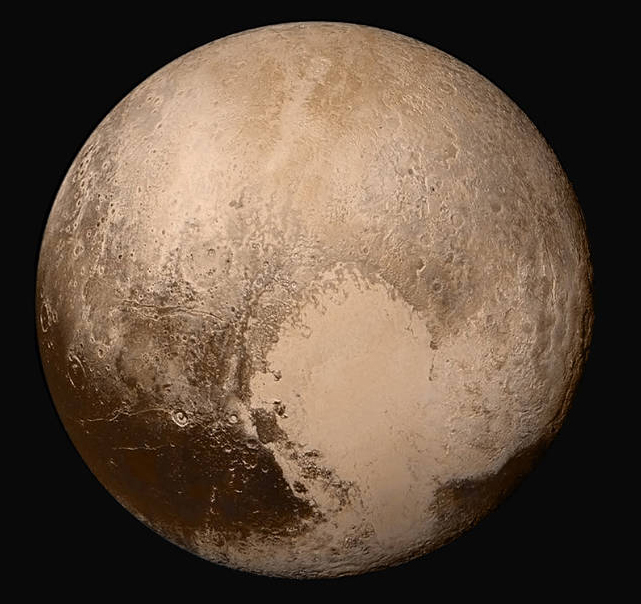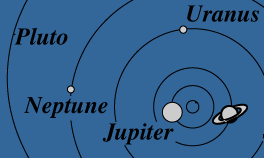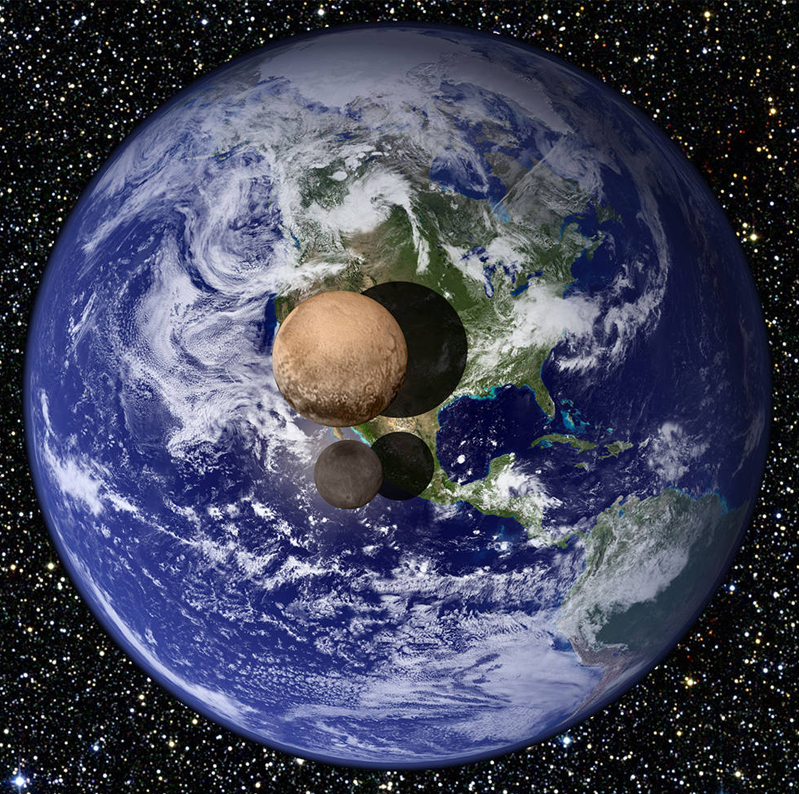Pluto
The Former Planet
 Image Credit: NASA/JHUAPL/SwRI | This is a true color mosaic image of Pluto assembled from images taken from the New Horizons spacecraft near the time of its closest approach on July 14, 2015. . |
|
 Pluto was discovered by C. Tombagh in 1930, using the same techniques by which Neptune was found. But Pluto, much smaller than expected, is too tiny to affect faraway Uranus, so it's discovery was an accident. Pluto's moon Charon is a surprising one-third the diameter of Pluto . Both may be escaped satellites of Neptune. Pluto's orbit is unique in that it is much more elliptical than the planets, and it is inclined 17° to the plane of the Earth's orbit.
|

Image Credit: NASA composite image
| Why was Pluto demoted from Planet status? |
Solar System Illustration
Solar System Concepts
| HyperPhysics********** Astrophysics | R Nave |

